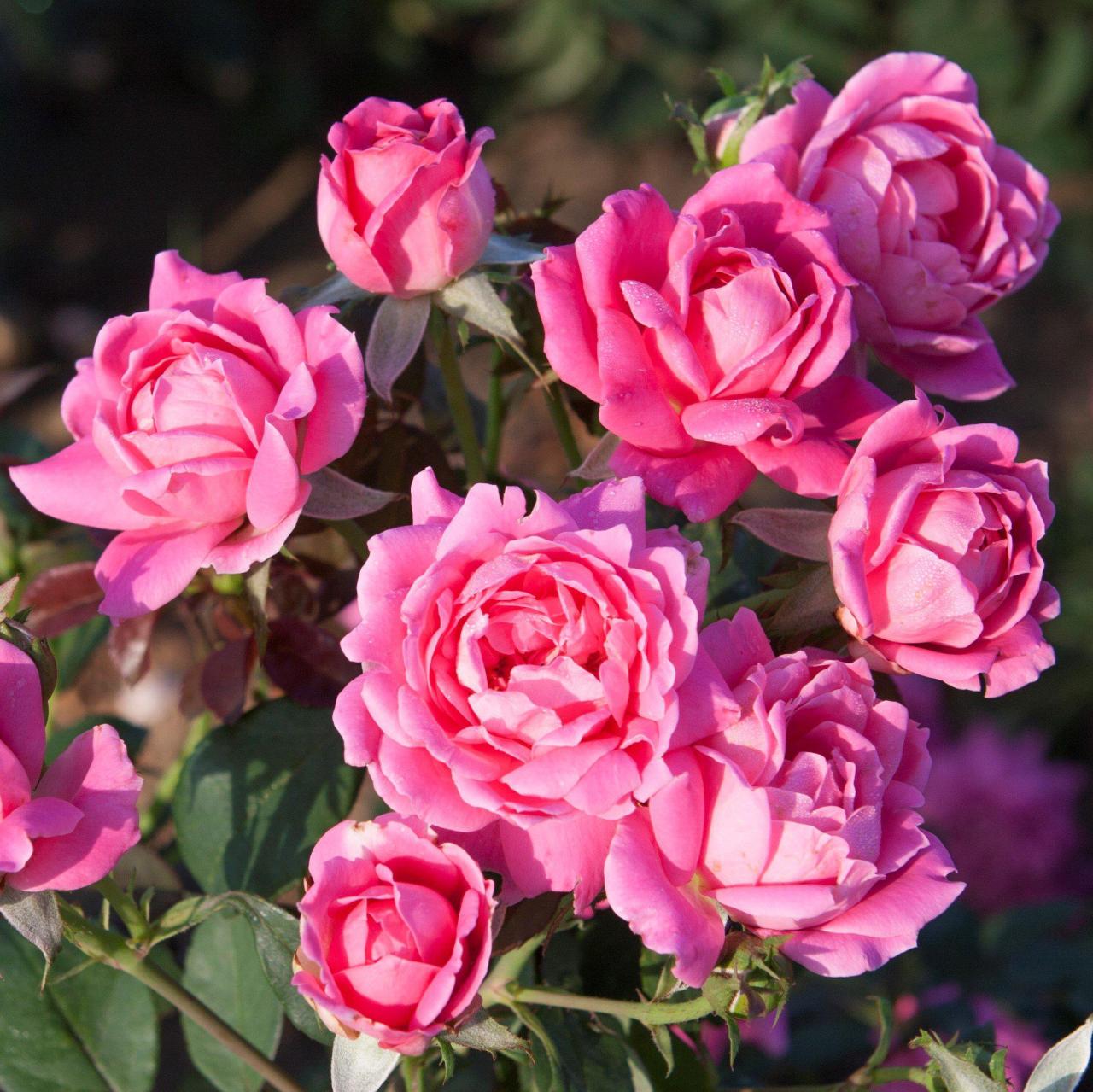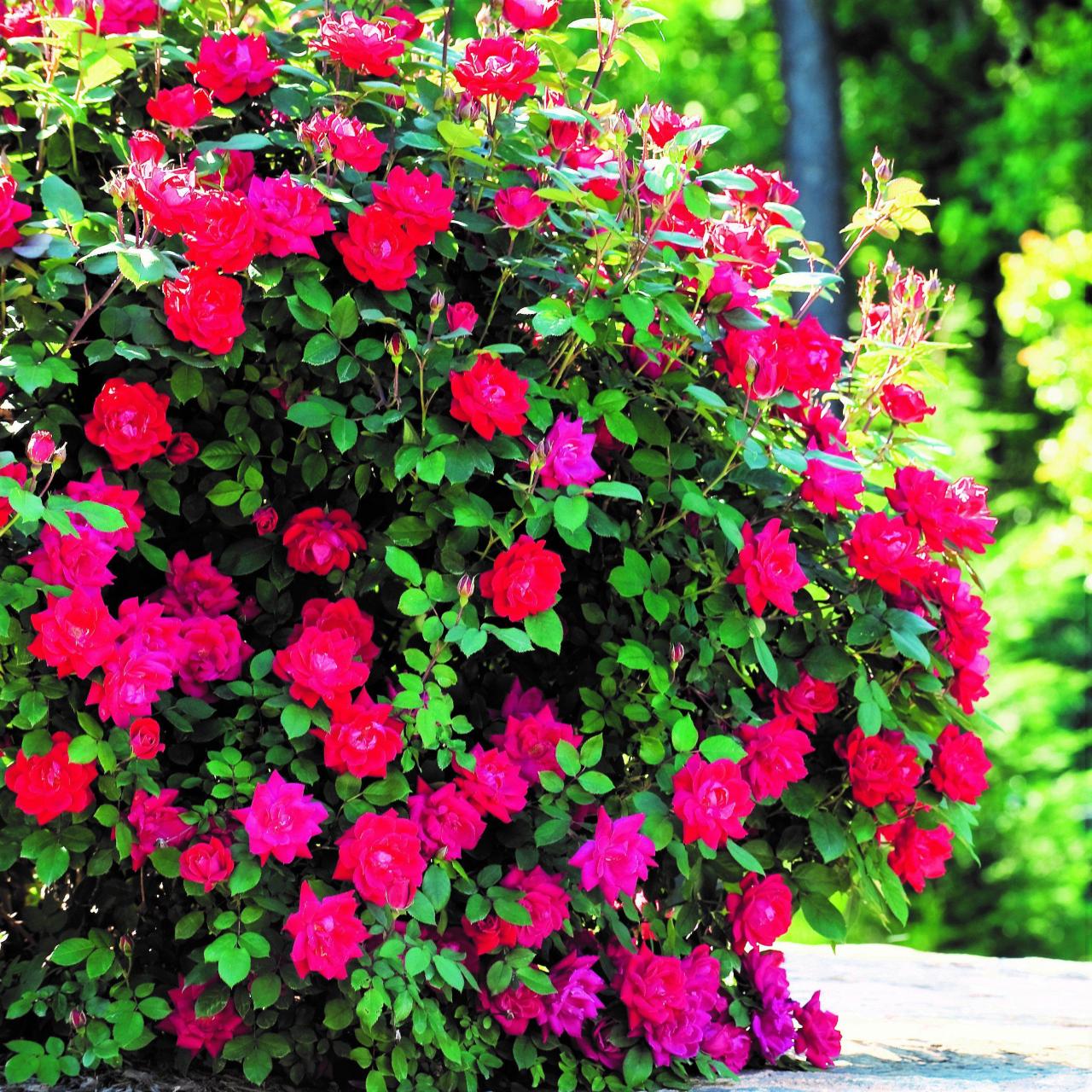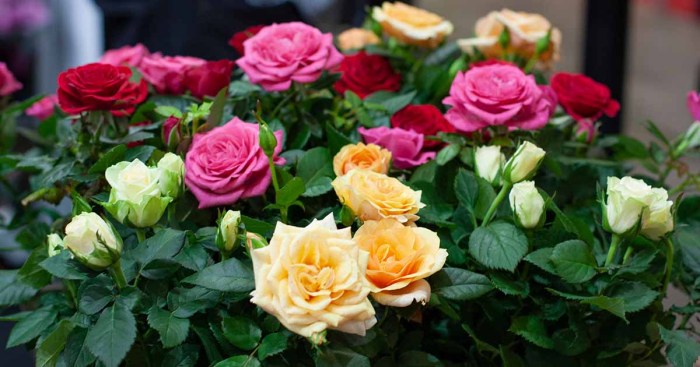Understanding the “Rose Tree Plant” Market: Rose Tree Plant For Sale
Rose tree plant for sale – The rose tree, a captivating blend of shrub rose robustness and tree rose elegance, occupies a niche market within the broader horticultural landscape. Understanding this market requires examining the diverse offerings, customer preferences, pricing dynamics, and the typical buyer profile. This analysis will provide insights into the key factors driving sales and shaping the future of this increasingly popular plant.
Types of Rose Trees Available
Several types of rose trees cater to different aesthetic preferences and growing conditions. These include David Austin rose trees, known for their classic, old-fashioned blooms; floribunda rose trees, boasting clusters of smaller flowers; and climbing rose trees, which can be trained to adorn walls or arches. Hybrid tea rose trees, prized for their large, perfectly formed blossoms, also represent a significant segment of the market.
The choice depends on factors such as desired flower size, colour, fragrance, and growth habit.
Key Characteristics Buyers Seek
Rose tree buyers typically prioritize several key characteristics. Fragrant blooms are highly sought after, adding a sensory dimension to the aesthetic appeal. Disease resistance is crucial, as it minimizes maintenance and ensures the longevity of the plant. The size and shape of the plant at maturity are also important considerations, ensuring compatibility with the available garden space.
Finally, the colour and type of blooms influence purchasing decisions, aligning with personal preferences and garden designs. A healthy, well-established plant, free from pests and diseases, commands a premium.
Pricing Strategies of Rose Tree Sellers
Pricing strategies vary significantly among rose tree sellers. Smaller, independent nurseries may offer competitive pricing, often reflecting lower overhead costs. Larger garden centres and online retailers often employ a tiered pricing structure, with prices varying based on the size, variety, and age of the plant. Premium rose trees, those with exceptional characteristics or rare varieties, command higher prices.
Seasonal discounts and bulk purchasing options also influence pricing, impacting affordability for buyers. For example, a smaller nursery might offer a David Austin rose tree for £25-£35, while a large garden centre might price a similar plant between £35-£50, depending on size and age.
Typical Customer Demographics
The typical customer base for rose trees includes experienced gardeners seeking to enhance their existing landscape, as well as enthusiastic amateurs looking to add a statement piece to their gardens. Homeowners with established gardens and sufficient space are the primary target demographic. Age ranges from 35 to 65 are commonly observed, reflecting the established homeownership patterns of this group.
Finding the perfect rose tree plant for sale is exciting, but proper spacing is crucial for healthy growth. Before you buy, consider how much space each rose bush needs; you’ll want to consult a guide on how far apart should you plant trees to ensure optimal sunlight and air circulation. This planning will maximize the beauty and longevity of your rose trees.
Affluent homeowners who are willing to invest in higher-quality plants also represent a significant portion of the market. However, younger generations, increasingly interested in sustainable and low-maintenance gardening, are also starting to show interest in rose trees that fit these criteria.
Rose Tree Specifications
| Rose Tree Type | Average Price (£) | Bloom Time | Common Growing Zone |
|---|---|---|---|
| David Austin | 30-50 | June-September | 6-9 |
| Floribunda | 25-40 | May-October | 5-9 |
| Climbing | 40-70 | June-September | 6-9 |
| Hybrid Tea | 35-60 | June-October | 6-9 |
Online Sales Channels for Rose Tree Plants

Right, so you’ve cracked the market research bit, now let’s talk shop about actually shifting those rose trees online. Getting your product in front of the right punters digitally is key, and choosing the right platform is half the battle. We’ll look at the pros and cons of various options, and how to make your listings truly shine.Online marketplaces like Etsy and Amazon offer significant reach, but each has its own quirks.
This section will explore the advantages and disadvantages of using these platforms, alongside strategies for optimising your online presence and making those sales.
Advantages and Disadvantages of Online Marketplaces, Rose tree plant for sale
Using established platforms like Etsy and Amazon offers massive exposure to a pre-existing customer base. Etsy, in particular, leans towards a more artisan and handcrafted market, potentially attracting buyers looking for unique plants. Amazon, on the other hand, offers sheer scale, but competition is fierce. The advantages include built-in payment processing, customer service infrastructure, and marketing tools.
However, Etsy charges fees per listing and transaction, and Amazon’s fees can be even higher, potentially cutting into profit margins. Furthermore, the competition on Amazon is relentless, requiring robust marketing strategies to stand out. Etsy’s focus on handmade items might be a double-edged sword; some buyers might perceive “rose tree” as less artisanal than other products. Therefore, a well-defined niche and brand identity are crucial for success on both platforms.
Effective Marketing Strategies for Online Rose Tree Sales
Successful online sales hinge on targeted marketing. Think about your ideal customer – are they seasoned gardeners, urban dwellers looking for a touch of nature, or something in between? Tailor your marketing materials to resonate with their interests and needs. Social media marketing (Instagram, Facebook, even TikTok) is essential. High-quality images and videos showcasing the beauty and unique characteristics of your rose trees are crucial.
Consider running targeted ad campaigns on these platforms, focusing on demographics and interests relevant to your target audience. Running contests and giveaways can also generate buzz and attract new followers. Search Engine Optimisation () is also vital. Using relevant s in your product descriptions and website content will improve your search engine ranking, making it easier for potential customers to find you.
Creating High-Quality Product Photos and Descriptions
Presentation is everything. Your online listings are your shop window – make them count! Use professional-looking photos that showcase the rose trees from multiple angles, highlighting their size, colour, and unique features. High-resolution images are a must. Consider showing the rose tree in different settings – in a garden, on a patio, even in a stylish pot.
Your descriptions should be detailed and informative, including specifics such as height, width, bloom colour, and care instructions. Use evocative language that appeals to the senses, but avoid hyperbole. Be honest and transparent about the condition of the plant and any potential issues. Think about including customer testimonials to build trust and social proof.
Secure Online Payment Processing
Choosing a secure payment gateway is non-negotiable. Customers need to feel confident that their financial information is protected. Platforms like Etsy and Amazon offer built-in secure payment systems, but if you’re using your own website, you’ll need to integrate a reputable payment gateway such as PayPal or Stripe. Clearly display your payment policy on your website and listings, outlining accepted payment methods and any associated fees.
This transparency builds trust and avoids misunderstandings.
Potential Online Advertising Platforms
A multi-pronged approach to advertising is often the most effective. Beyond the built-in advertising options on Etsy and Amazon, consider using platforms like Google Ads, which allows you to target specific s and demographics. Social media advertising on platforms like Instagram and Facebook, as mentioned earlier, can also be highly effective. You might also explore collaborating with gardening influencers or bloggers to promote your rose trees to their audience.
Remember to track your ad campaigns carefully to measure their effectiveness and optimise your spending.
Care and Maintenance of Rose Tree Plants

Right, so you’ve splashed out on a gorgeous rose tree – top marks! Now, let’s make sure it thrives. Neglecting your new arboreal beauty is a right recipe for disaster, so pay attention, because keeping it happy and healthy isn’t rocket science, but it does require a bit of TLC. Think of it as a horticultural friendship – invest the time, and you’ll reap the rewards.
Watering Requirements for Rose Trees
Consistent watering is key to a flourishing rose tree. Overwatering can lead to root rot, while underwatering results in wilting and stunted growth. The frequency of watering depends on several factors, including the climate, soil type, and the size of the tree. A good rule of thumb is to water deeply but less frequently, allowing the soil to dry slightly between waterings.
During hotter months, you might need to water more often, perhaps even daily, depending on the conditions. Always check the soil moisture before watering – stick your finger a couple of inches into the soil; if it feels dry, it’s time to water. Avoid letting the soil become completely waterlogged, as this can suffocate the roots.
Ideal Soil Conditions and Fertilization
Rose trees prefer well-drained, slightly acidic soil (pH 6.0-6.5). Poor drainage can lead to various problems, including root rot and fungal diseases. Enriching the soil with organic matter, such as compost or well-rotted manure, improves drainage and provides essential nutrients. Regular fertilisation is crucial for healthy growth and abundant blooms. Use a balanced rose fertiliser, following the instructions on the packaging carefully.
Avoid over-fertilising, as this can damage the roots and lead to leaf burn. A slow-release fertiliser is often a good option as it provides a consistent supply of nutrients over time.
Common Pests and Diseases and Their Control
Rose trees, like any plant, are susceptible to pests and diseases. Common pests include aphids, spider mites, and rose slugs. These can be controlled using insecticidal soap or neem oil. For more serious infestations, you might need to consult a gardening expert or use a systemic insecticide. Common diseases include black spot, powdery mildew, and rust.
These fungal diseases can be controlled using fungicides, but good air circulation and proper watering techniques can also help prevent them. Regular inspection of your rose tree is essential for early detection and timely intervention.
Pruning Techniques for Rose Trees
Pruning is essential for maintaining the shape, size, and health of your rose tree. It encourages new growth and promotes more abundant flowering. The best time to prune is during late winter or early spring, before new growth begins. Remove any dead, damaged, or diseased branches. Thin out overcrowded branches to improve air circulation and prevent disease.
You can also shape the tree by selectively removing branches to maintain a desired form. Always use sharp, clean pruning shears to prevent the spread of disease.
Simple Care Guide for Rose Tree Owners
- Water deeply but less frequently, allowing the soil to dry slightly between waterings.
- Use well-drained, slightly acidic soil (pH 6.0-6.5), enriched with organic matter.
- Fertilise regularly with a balanced rose fertiliser, following package instructions.
- Inspect regularly for pests and diseases; treat promptly with appropriate methods.
- Prune annually in late winter or early spring, removing dead, damaged, or diseased branches and shaping the tree as desired.
Legal and Regulatory Aspects of Rose Tree Sales

Right, so you’re thinking of flogging rose trees online, eh? Sounds blooming lovely, but before you start raking in the dosh, there’s a whole thorny bush of legal stuff to navigate. Getting this right is crucial – one wrong move and you could be facing a right royal mess.
Permits and Licenses Required for Selling Rose Trees
Depending on your location and the scale of your operation, you might need various permits and licenses. These could include business licenses (standard stuff, really), agricultural permits if you’re growing the roses yourself, and potentially plant health certificates, especially if you’re sourcing plants across borders or regions. Local council websites and government agricultural departments are your best bet for specific requirements in your area.
Failing to obtain necessary permits could lead to hefty fines and legal repercussions.
Accurate Product Labeling and Descriptions
This is mega-important. Misleading descriptions or incorrect labeling can land you in hot water. Your labels must accurately reflect the variety of rose tree, its size, and its hardiness. Crucially, any potential health risks (e.g., thorns, potential allergens) should be clearly stated. Think of it like this: if a customer gets stung by an unexpected thorn or has an allergic reaction, you could be liable.
Clear, concise, and accurate labelling is your best defence.
Consumer Protection Laws Related to Plant Sales
Consumer protection laws vary by jurisdiction, but generally speaking, you’re obliged to provide a product that matches the description and is of satisfactory quality. If a customer receives a diseased or damaged plant, they have grounds for a complaint. Understanding your local consumer rights legislation is vital to avoid disputes and potential legal action. For example, the customer might be entitled to a refund, replacement, or compensation.
Potential Liability Issues Associated with Selling Rose Trees
Liability can stem from various sources. As mentioned, faulty goods, incorrect descriptions, and health risks are all potential issues. Furthermore, if a customer is injured while handling your rose tree (say, a nasty thorn injury), you could face liability claims. Product liability insurance is something seriously worth considering, especially as your business grows. This will help to cover legal costs and potential compensation payments.
Legal Considerations Checklist for Rose Tree Sellers
Right then, to avoid a right old drama, here’s a quick checklist:
- Obtain all necessary business and agricultural permits and licenses.
- Ensure accurate and truthful product descriptions and labeling.
- Understand and comply with all relevant consumer protection laws.
- Consider obtaining product liability insurance.
- Keep meticulous records of all transactions and communications with customers.
- Stay updated on any changes in relevant legislation.
Question Bank
What is the best time of year to plant a rose tree?
The ideal time is typically spring or fall, after the threat of frost has passed and before the extreme heat of summer.
How often should I water my rose tree?
Water deeply and regularly, especially during dry periods. The frequency depends on the climate and soil conditions; aim for consistently moist but not waterlogged soil.
What are some common problems with rose trees?
Common issues include black spot, powdery mildew, aphids, and spider mites. Regular inspection and prompt treatment with appropriate organic or chemical solutions are crucial.
How long does it take for a rose tree to bloom?
This varies greatly depending on the variety and growing conditions, but many rose trees will bloom within the first year after planting.
Do I need special tools to prune a rose tree?
Sharp, clean pruning shears are essential for clean cuts to prevent disease. For larger branches, loppers may be necessary.
